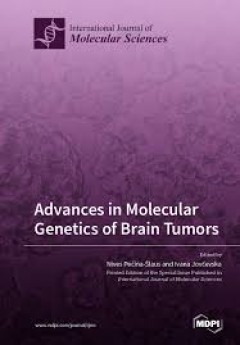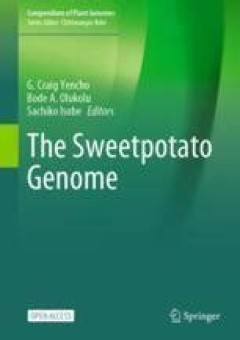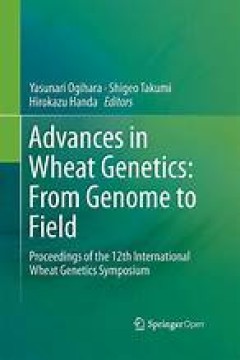Filter by

Advances in Molecular Genetics of Brain Tumors
Deregulation of signalling pathways that regulate cell growth, survival, metabolism, and migration can frequently lead to the progression of cancer. Brain tumours are a large group of malignancies characterised by inter- and intratumoral heterogeneity, with glioblastoma (GBM) being the most aggressive and fatal. The present study aimed to characterise the expression of cancer pathway-relate…
- Edition
- -
- ISBN/ISSN
- 9783036566443
- Collation
- 242
- Series Title
- -
- Call Number
- -

Advances in the Molecular Understanding of Colorectal Cancer
An understanding of the molecular pathogenesis of colorectal cancer by researchers and clinicians is essential to facilitate progress in improving patient outcomes in this common cancer that still carries a poor prognosis if not identified early. This book covers the major areas of importance in the field, incorporating new knowledge that has arisen due to the advancement of molecular technique…
- Edition
- -
- ISBN/ISSN
- 9781839620041
- Collation
- oer.unej.ac.id
- Series Title
- -
- Call Number
- -

The Sweetpotato Genome
This open access book is a compilation of advances in sweetpotato genomics, which have been used to improve our understanding of the evolution of sweetpotato, increase our knowledge of crop growth and development, and provided critical information required for genomic-assisted breeding in sweetpotato. Sweetpotato is a critical food staple for millions of people in the developing world that has…
- Edition
- -
- ISBN/ISSN
- 9783031650031
- Collation
- XVII, 166 hlm ill; lamp
- Series Title
- -
- Call Number
- -

Dilated Cardiomyopathy = From Genetics to Clinical Management
This open access book presents a comprehensive overview of dilated cardiomyopathy, providing readers with practical guidelines for its clinical management. The first part of the book analyzes in detail the disease’s pathophysiology, its diagnostic work up as well as the prognostic stratification, and illustrates the role of genetics and gene-environment interaction. The second part presents c…
- Edition
- 1
- ISBN/ISSN
- 9783030138646
- Collation
- IX, 241 ill; hlm
- Series Title
- -
- Call Number
- -

The Pangenome = Diversity, Dynamics and Evolution of Genomes
This open access book offers the first comprehensive account of the pan-genome concept and its manifold implications. The realization that the genetic repertoire of a biological species always encompasses more than the genome of each individual is one of the earliest examples of big data in biology that opened biology to the unbounded. The study of genetic variation observed within a species…
- Edition
- 1
- ISBN/ISSN
- 9783030382810
- Collation
- XIV, 307 hlm; ill., lamp.,
- Series Title
- -
- Call Number
- -

Sowing Legume Seeds, Reaping Cash : A Renaissance within Communities in Sub-S…
This open access book shares impact stories – testimonies from various value chain actors who have been part of the Tropical Legumes (TL) projects, over the past twelve years. The Tropical Legumes projects led by ICRISAT in three parts (TLI, TLII and TLIII), constitute a major international initiative supported by the Bill & Melinda Gates Foundation (BMGF) and jointly implemented by the Inter…
- Edition
- 1
- ISBN/ISSN
- 9789811508455
- Collation
- XVI, 106 hlm; ill., lamp.,
- Series Title
- -
- Call Number
- -

Low-Dose Radiation Effects on Animals and Ecosystems : Long-Term Study on the…
This open access book summarizes the latest scientific findings regarding the biological effects of the Fukushima Daiichi Nuclear Power Plant (FNPP) accident in 2011. Various cases of changes in animals and organisms have been reported since the FNPP accident. However, it is often unknown whether they are actually due to radiation, since the dose or dose-rate are not necessarily associated w…
- Edition
- 1
- ISBN/ISSN
- 9789811382185
- Collation
- XV, 264 hlm,: ill, lamp;
- Series Title
- -
- Call Number
- -

Advances in Wheat Genetics: From Genome to Field
This proceedings is a collection of 46 selected papers that were presented at the 12th International Wheat Genetics Symposium (IWGS). Since the launch of the wheat genome sequencing project in 2005, the arrival of draft genome sequences has marked a new era in wheat genetics and genomics, catalyzing rapid advancement in the field. This book provides a comprehensive review of the forefront of wh…
- Edition
- 1
- ISBN/ISSN
- 978-4-431-55675-6
- Collation
- -
- Series Title
- XVI, 445
- Call Number
- 572

The Wheat Genome
This open access book provides the first comprehensive coverage of the wheat genome sequence since the publication of the draft and reference sequences for bread wheat and durum wheat. It presents an overview and all aspects of the gold standard sequence of the bread wheat genome, IWGSC RefSeq v1.0 and its subsequent improvements through 2022 (IWGSC RefSeq v2.1), as well as the sequencing of mu…
- Edition
- -
- ISBN/ISSN
- 978-3-031-38294-9
- Collation
- XIV, 320
- Series Title
- -
- Call Number
- -

The genealogy of a gene :patents, HIV/AIDS, and race
In The Genealogy of a Gene, Myles Jackson uses the story of the CCR5 gene to investigate the interrelationships among science, technology, and society. Mapping the varied "genealogy" of CCR5 -- intellectual property, natural selection, Big and Small Pharma, human diversity studies, personalized medicine, ancestry studies, and race and genomics -- Jackson links a myriad of diverse topics. The hi…
- Edition
- -
- ISBN/ISSN
- 9780262327190
- Collation
- 1 online resource (xii, 336 pages) :illustrations, map.
- Series Title
- -
- Call Number
- -
 Computer Science, Information & General Works
Computer Science, Information & General Works  Philosophy & Psychology
Philosophy & Psychology  Religion
Religion  Social Sciences
Social Sciences  Language
Language  Pure Science
Pure Science  Applied Sciences
Applied Sciences  Art & Recreation
Art & Recreation  Literature
Literature  History & Geography
History & Geography